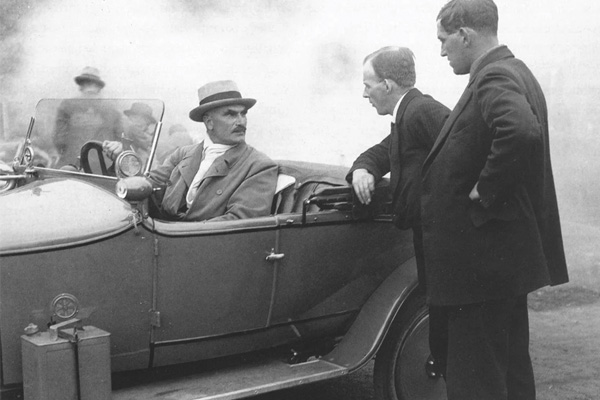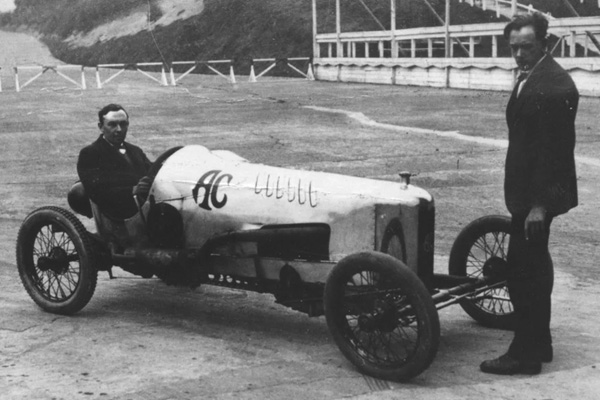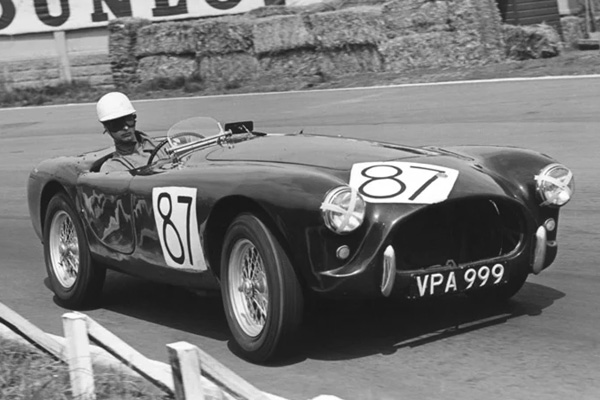AC cars before the Cobra
Few cars have come to define a car brand more than the AC Cobra. For many, it’s the only AC model they might be able to name and recognise, yet this British company earned an enviable reputation long before Carroll Shelby dreamed up his V8-powered sports car in the 1960s.

The roots of AC are firmly planted in engineering excellence with the Weller brothers, which founded their company in 1901 in West Norwood, London. John Weller in particular showed a natural bent for invention and innovation, which was allowed to flourish when local butcher John Portwine came on board as a shareholder that saw AC launch its first car in 1903. The 20hp Weller Touring Car was a four-seater with four forward gears and reverse, which was more than many of its rivals could muster at the time.

However, the influence of Portwine became more apparent with the company’s next vehicle, which was a three-wheeled delivery vehicle. With two wheels at the front and the driver sitting at the back over the driven rear wheel, this was just the sort of thing a lot of smaller businesses needed to expand their reach. Called the Autocarrier, this three-wheeler is also responsible for the ‘AC’ name that would later be adopted. The same basic vehicle also spawned the Sociable, which was a passenger version that swapped the load tray for a seat so the driver had to peer around to see and steer.

It might not have been the most practical of two-seat cars, but the Sociable remained in production until 1915, by which time the company was using the AC name that was first attached to its cars in 1907. It was also in the middle of this period that AC moved from its south-east London base to Thames Ditton to the south west of the capital. This is the location most closely associated with AC and where most of its most notable cars would be built up to and including the Cobra.
That iconic model was a long way off at this point yet AC was showing a leaning towards sporting models with its 10hp model in 1913. A simple, elegant two-seater, the 10hp would almost certainly have enjoyed great success if the First World War had not interrupted production. After the war, John Weller did not take long to come up with a more powerful engine in the form of a straight-six. It started as a 1.5-litre motor with 40hp, but soon grew to 2.0-litres and a very healthy 105bhp. Such was the clever engineering of this motor, it rapidly became a hallmark of the company and was used in a variety of racing and record cars.

However, change was afoot elsewhere at AC as racing driver SF Edge, who had set records at Brooklands, bought into the company. Shortly after this, both Portwine and John Weller resigned, though this didn’t stop Edge from putting the six-cylinder engine into full production that would see it remain in use in new models all the way through to 1963. That’s quite an endorsement of just how good Weller’s design was.
Under Edge’s direction, AC cars were soon regular sights in racing, rallying, and record-breaking with a good deal of success helping to promote the firm. This effort saw an AC driven by JA Joyce become the first 1500cc car to cover 100 miles in one hour at Brooklands with an average speed of 101.39mph. It also set further records for various distances as part of this attempt.

Even with so much positive publicity, AC could not shield itself from the effects of a worldwide recession and yet another investor was needed to keep the company alive. Enter William and Charles Hurlock, who reinvented the company as a maker of elegant, sporting touring cars to rival the likes of Lagonda and Aston Martin.
Again, war saw AC car production halted for the duration of hostilities and after the Second World War the company survived by producing electric trains. In typical fashion, these trains were superbly made and lasted in service into the 1970s. However, car manufacturing restarted when AC began building the Invacar, a single-seat three-wheeler designed for disabled people in the aftermath of the war. Alongside this, AC’s more usual fare got under way with the 2-Litre that used that brilliant Weller-designed engine and came with sweeping bodywork.

Then, in 1953, AC wowed the world with its new Ace sports car, which was followed a year later by the Aceca coupe version. These sleek two-seat cars were fast road machines that were also more than capable of winning races, and plenty of owners did just that. Perhaps the most prominent result for the Ace was its seventh place overall and class win in the 1959 Le Mans 24 Hours, an endurance event dominated by British makes throughout the 1950s.
The Le Mans Ace used a Bristol 2.0-litre engine rather than AC’s own motor, and there were others looking to improve performance with alternative power sources> Ken Rudd was a noted engine tuner of the period and he was working with Ford’s six-cylinder motor from the Zephyr. With this unit installed in the Ace, AC had a very rapid sports car that became known as the AC Ace 2.6, which referred to the engine’s capacity. Only 36 of these cars were built, which makes it rarer than most Cobra versions, but by the start of the 1960s it was clear that AC needed something more potent to remain in the top flight of sports car performance. This is where Carroll Shelby comes into AC’s story with his plan to fit a Ford 260cu in (4.2-litre) V8 into the Ace, though Shelby had originally approached Chevrolet about using Corvette motors. However, Chevrolet didn’t fancy the comparison and declined, so Shelby went with Ford instead and the result became the most famous AC car of them all – the Cobra.

COMMENT